Learning Objectives
As a result of this course, participants will be able to:
- List the benefits of the ZPower System for Rechargeable Hearing Aids.
- Distinguish between the various types of battery technology available to hearing aid wearers today.
- Describe the process it takes to bring a product to market through independent testing labs and patient experience.
Introduction and Overview
I'm excited to talk to you today about ZPower’s complete system. It consists of silver zinc batteries, multiple battery doors to make many of today's most popular hearing aids rechargeable, and a sleek and compact charger. We've known about the potential for silver zinc battery technology for decades. Silver zinc battery technology has been used for years by NASA and the military for mission-critical applications. When Sputnik was launched in 1957, it was powered by a one-time use silver oxide battery. Later, Apollo missions would use early rechargeable silver zinc batteries. These early batteries took advantage of silver zinc's high energy density, but they weren't commercially viable because of the limited number of recharges each battery could accept. The challenge was that these early batteries could only be recharged a very limited number of times. Through nearly two decades of research that has resulted in over 129 published patents, ZPower has developed proprietary silver zinc battery technology that can be recharged over 400 times without losing significant energy capacity.
A ZPower battery is the world's smallest, highest energy rechargeable battery available in any industry, including the hearing industry. This begs the question: Why the hearing industry? In addition to the immense growth and market prediction, it was quite easy – the patients demand it.
When you've been in the hearing industry and worked with patients, no matter how sophisticated or how small the hearing aids become, patients are still reluctant to seek amplification. Once they do adopt hearing healthcare, setting realistic expectations becomes a primary focus.
When I dispensed and had my private practices, batteries weren't a big concern of mine. I thought that if patients were paying thousands of dollars for hearing aids, an extra couple hundred dollars each year shouldn't be a big deal. Have trouble changing your batteries? No problem! Have a friend help you, or stop in and see us. Free customer service, right?
As hearing care providers, we typically gloss over how much of a hassle the batteries actually are. Last year we attended the Hearing Loss Association of American convention in Saint Louis and conducted interviews with hearing aid users. Their words were powerful. Here are some of the quotes and comments we received:
- I don't like the fact that I have to change the batteries on my hearing aids. I do it because I have to.
- I don't want to get stuck in an awkward situation where I have to change batteries.
- The other person has to wait. It's uncomfortable, physically and emotionally to make people wait for your hearing impairment.
Benefits of Rechargeability
Provider Benefits
We all understand that rechargeability makes life easier for patients. However, changing and adopting a new process, a new technology, and quite frankly, a lesser-known company, is a pretty big decision for a provider. You have to consider the question: What's in it for you? Why should you introduce ZPower into your practice? There are several reasons.
First, I'd like you to think about your goals as a private practitioner. Some common ones that I hear include: I want to help more patients; I want to be more successful; I want to be more competitive. All of these goals are achievable with ZPower.
Many of the topics we are going to discuss in this course are centered around the ability to now deliver a solution your patients have been demanding for years. We're going to review the MarkeTrak data showing why the demand for rechargeable hearing aids has continued to rise. You'll also gain a knowledge of our battery chemistry and how it compares to competitive rechargeable technology. We'll discuss the potential of a new revenue stream – both through new patient fittings, and also by retrofitting the existing patients in your database. As an added bonus, I'm going to share some marketing pieces we've developed that can help support your efforts.
Many practices have given away free batteries for years. The ZPower system allows you to replace lost battery revenue. We'll show you what your five-year rate of return would be based on your first year with ZPower in your annual hearing aid volume. Lastly, you'll be able to confidently help your patients by asking them one simple question: "Do you want to change your batteries once a year, or once a week?"
For the Patient
ZPower batteries offer many benefits for the patient, as evidenced by these quotes from hearing aid users.
Technology benefits. “Patients want and demand better technology. It doesn’t have to be sophisticated. Simple improvements, like rechargeability, make our quality of life so much better.”
Health benefits. “It's just a phenomenal hearing system, it's made my quality of life one step better.” This quote is from a 52-year-old, highly active gentleman. Our batteries are not just meant for people who have dexterity challenges.
Reduced hassle. “With ZPower, I can put batteries, battery changing and looking for batteries out of my mind.”
Market trends. Look at some of the market trends coming our way. PSASPs from Samsung and others will be consumer electronics. Their goal is to keep the patients away from you. We want to help keep patients in a clinical setting with modern technology.
Financial benefits. “I pay thousands of dollars for my hearing aids and then a couple hundred each year in batteries.” As I stated earlier, we may tend to minimize that in our clinics, but it is definitely on our patients’ minds.
For the Planet
One ZPower battery replaces as many as 100 disposables. Think about the number of patients you have seen over your career. ZPower batteries are fully recyclable. They're definitely the best option for the environment. Over 1.4 billion batteries are thrown away annually by hearing aid users. ZPower offers a great opportunity to help your patients while also helping the environment.
Hearing Aid Battery Landscape
As we look at the battery landscape (Figure 1), we will review pros and cons of these four types of batteries: Zinc Air, Nickel Metal Hydride (NiMH), Lithium-Ion (Li-Ion) and Silver-Zinc (AgZn).

Figure 1. Hearing aid battery landscape.
Zinc Air
This is the typical hearing aid battery that we've been using for decades. It has a very high energy density. It has a low cost, but it is single use and not rechargeable. It is also pretty unpredictable and can go out in the most inconvenient times. We have heard over and over again that this is definitely the biggest problem for our patients. We've been overcoming inefficiencies by giving away batteries, eroding revenue and allowing our patients the luxury of buying their hearing aid batteries from CVS, Amazon, Costco, and other competitors. That's not a very good business case for continuing to use zinc air.
Nickel Metal Hydride (NiMH)
Nickel metal hydride (NiMH) is a VARTA battery used within current products available on the market. It's important to understand the difference in this technology as it compares to the ZPower silver zinc (AgZn) technology. The NiMH technology is different in that it has a memory effect. While a NiMH battery has similar lifecycles to ours at 400, the memory effect can cause some pretty big problems. Every time your patient puts their hearing aids on the charger and takes them off, the overall lifecycle is reduced. Regardless of how much time it sits on the charger - whether it is 20 minutes, 6 hours, or a whole night - it has reduced the lifecycles.
Commonly, patients who have used NiMH tell us that that they expect a full year, but they only get about six months per battery. That's specifically due to the memory effect. Additionally, NiMH doesn't have as much capacity. Not only are patients not getting a full year, they don't get a full day.
Lithium Ion (Li-Ion)
Li-Ion has a high energy density in high voltage. It's relatively inexpensive, however, one drawback is the safety concerns associated with it. Think of e-cigarettes and hover boards – those are products that use lithium ion batteries. Li-Ion tends to get hot and laptop batteries have even been known to catch fire. How many times has your cellphone gotten warm just from using it? It's not something we would necessarily want in a hearing aid next to our patients’ heads. In order to keep Li-ion batteries safe and non-flammable, additional circuitry has to be added to the hearing aid. This increases the cost and the size of the hearing aid. The biggest downfall is that the patient is not able to interchange a zinc air battery if necessary. In situations where there is a power outage, if you are on vacation, or simply that your hearing aid just doesn’t work - a patient with a Li-Ion powered hearing aid simply has no backup option.
Silver-Zinc (AgZn)
ZPower batteries use a water-based chemistry that's stable, non-flammable, and safe for medical and wearable applications. You'll never have to worry about ZPower batteries leaking toxic materials or catching fire if they are mishandled. Our batteries are also interchangeable with zinc air. If a patient does experience an interruption in their power, or if they want to go off grid for a few days, it is no problem, and they can continue to enjoy their hearing aids.
A Rechargeable Solution
Hearing aid wearers are demanding a rechargeable solution, especially since there have been so many advances in the hearing industry over the past 10 years. In 2004, wireless technology was introduced. In 2006, Bluetooth capabilities became available. In 2008, when MarkeTrak asked hearing aid users how satisfied they are with their batteries, 50% were pretty satisfied. It wasn't until the introduction of MiFi through Starkey, ReSound and Beltone in 2013 that patients started to feel hearing aid batteries just weren't keeping up. In 2014, Amyn Amlani commented that rechargeability in hearing aid batteries could potentially increase the market by 8.9%. In 2015, MarkeTrak 9 was released. It showed that non-owners of hearing aids, in order to move forward with the purchase of a hearing aid, desired certain features. Two of the top features that they wanted were: rechargeable hearing aids (#2) and rechargeable batteries (#4).
You patients want a rechargeable solution and now they have one. If you think about it, we would never accept disposable batteries in our smartphones or our laptops or other advanced technology in our lives. Until now, we've expected our patients to deal with disposable batteries in the most advanced devices they own – their hearing aids.
Who is a Candidate?
Patients who may benefit from rechargeability include those who are vision impaired or dexterity impaired, and have a hard time changing their batteries. We've spent a lot of time in the industry the last few years gaining an understanding of the co-morbidities that accompany hearing loss. For example, we have found a higher incidence of neuropathy, diabetes, cardiovascular issues, and strokes in people with hearing loss. There are many additional co-morbidities that, from a health perspective, indicate that patients should be offered rechargeability.
What about those patients who are on a budget or a fixed income? They don't want to spend an extra $300-$400 dollars a year on replacement batteries. Next, we have new customers coming in who are tech-savvy baby boomers. They need something to keep up with them. Finally, some patients simply need rechargeability because they have a significant hearing loss and require high powered receivers. For patients, it's important that we understand that offering rechargeability is not about selling an accessory - it's accommodating their needs, their lifestyles and their expectations.
ZPower batteries are not an accessory. They make rechargeability possible for our patients. In order to establish who is a good candidate, simply ask every patient, "Do you want to change your batteries twice a week or once a year?"
Requirements and Testing
In order to bring a product to market, specific requirements need to be determined. Here are the top requirements that customers demand from a rechargeable battery:
- Cannot change the hearing aid performance
- Must charge in the hearing aids
- Must deliver all day power
- Must be easy to replace and last a full year
- Easy to charge
- Environmentally friendly
ZPower AgZN vs. Varta PowerOne NiMH
The first thing we did was set out to understand what do we have to do in order to make a current rechargeable hearing aid better. We started by specifically addressing what NiMH brings to the market.
The following tests were conducted by a company called SGS. They are the world’s leading inspection, verification, testing and certification company. When testing the performance of ZPower’s silver zinc technology versus the Nickel-Metal Hydride (the kind used in Siemens/Signia chargers), they found that ZPower’s silver zinc did in fact have twice the battery capacity (Figure 2).
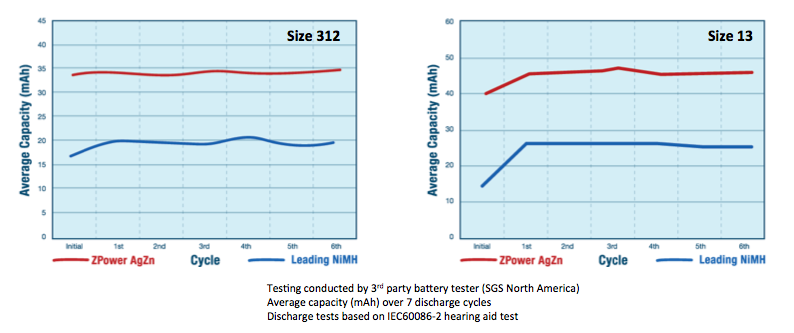
Figure 2. ZPower AgZN vs. Varta PowerOne NiMH.
Next, using SGS again, we performed testing to measure ZPower’s silver zinc against Varta PowerOne NiMh rechargeable cells, using the 2 mA base, 10 mA pulse (Figure 3). Most hearing aids state that they are in the 1.2 to 1.5 range. However, with today's features, on average most hearing aids are consistently pulling 2 mA. When the hearing aid is streaming, we've seen up to 5 mA. If we're looking at today's silver zinc (Figure 3, green line) versus NiMH (Figure 3, red line), at about 11 hours, NiMH has lost the capacity and is not even able to power above 1.1 volts, which is the operating need for a hearing aid. The silver zinc was still going strong, even after the test was terminated after 18 hours. Again, ZPower’s technology had twice the battery capacity and was able to meet the patient's needs for all day power.
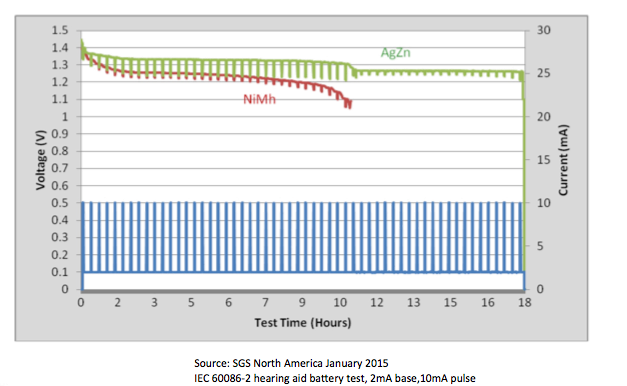
Figure 3. ZPower AgZn vs. Varta PowerOne NiMH (312).
Electroacoustic Testing
Dr. Catherine Palmer from the University of Pittsburgh conducted electroacoustic testing for us. One of the main requirements was that there could not be a problem with the electroacoustic output of the hearing aid when using the ZPower AgZn battery. As expected, we saw excellent results. Dr. Palmer tested hearing aids from all of the big six hearing aid manufacturers. The following two graphs (Figures 4 and 5) show the output of top hearing aids when using both silver zinc size 312 and also size 13 batteries (red lines) as compared to traditional 312 and 13 zinc air batteries (blue lines). As you can see, the results are the same. Acoustically, there is no difference.
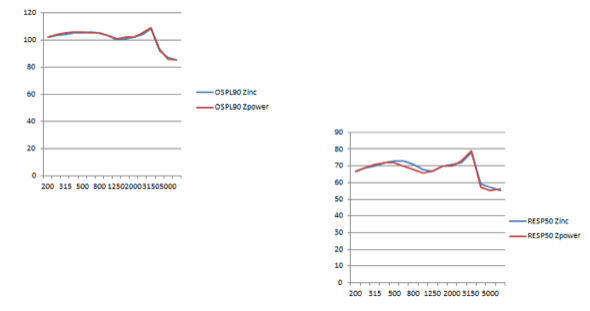
Figure 4. Output of top hearing aids: silver zinc 312 (red line) vs traditional 312 zinc air (blue line).
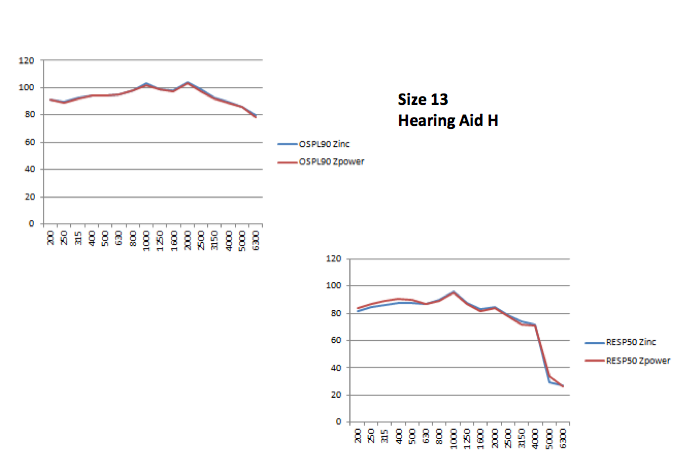
Figure 5. Output of top hearing aids: silver zinc 13 (red line) vs traditional 13 zinc air (blue line).
Field Trial Results
We then needed to put the hearing aid batteries into some hearing aids to gain an understanding of what we need to do from a patient's perspective. Our first field trial using a Phonak 13 Bolero was conducted at Vanderbilt University (September 2014 through March 2015). Nine participants (3 males and 6 females) ranging in age from 23 to 85 years completed at minimum two months of the study. All participants were experienced hearing aid users (> 4 years of experience) and all but one subject had previously worn the experimental model of hearing aid. On average, hearing losses ranged from mild to severe and were both sensory and/or conductive in nature.
We collected surveys from nine participants and we also collected data directly from them. Dr. Todd Ricketts from Vanderbilt participated in this. Ultimately, we wanted to understand patients’ expectations. We can run lab work all day long, but if the patients don't have a good experience, it means that we don’t have the right product. We have to fine tune and make sure that the patient experience is absolutely top priority.
The questions asked during the post-survey study summary were:
- Was the charging system easy to use?
- Would you recommend it to a friend?
- Was the system easy to learn and stable?
- Did you need technical support to use the system?
The following graph (Figure 6) shows the results of the survey. The results on the left, using a scale of one to five, show they strongly agreed with the positive elements of the system. The results on the right show that they strongly disagreed with the negative elements.

Figure 6. Post-study survey summary.
They disagreed that it is cumbersome. They disagreed that they needed to learn a lot before they could use it. They disagreed that it was inconsistent. They all agreed that people would learn it quickly if they felt confident, that its functions are well integrated. They found the system easy to use and that they liked the system. Please understand, this wasn't our current system. This was a prototype, so we were very happy to see results on something for which we hadn't yet begun to use an industrial design.
Field Study Usage Profile
We then wanted to gather information on what usage looks like for a typical patient. The next graph (Figure 7) represents data from one patient’s usage, 24 hours per day over the course of approximately one month. When the patient wakes up in the morning and they take it off the charger, you see a blue bar. This particular patient woke up around 7:00 to 8:00 every morning. They would wear their hearing aids for about 14 hours and then put them on the charger at night (represented by a green bar). On average, for a Phonak Bolero, it would only take about three or so hours in order to recharge it. The yellow bars represent rest. In other words, yellow signifies the timeframe before the patient wakes up; the hearing aid batteries have been fully recharged and are simply waiting for the patient to pick them up and begin their day.
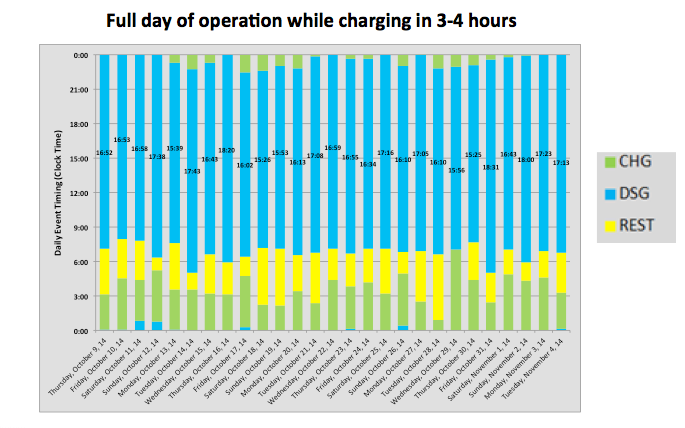
Figure 7. Field study usage profile.
Our charger works in a smart way. It turns the hearing aids off when they are placed onto the charger. This way, patients won't hear feedback, and there's no battery drain. It turns the hearing aids off until they pick them up again.
With so much yellow area, we realized that our patients are not completely discharging the battery. The next graph (Figure 8) was an attempt to determine how much capacity is remaining. The gray is the wear time and the green is the remaining capacity of the battery cell. We found that the batteries had two days of capacity left over when they weren't being fully discharged by their average wear time. Again, patients can vary from wearing them a few hours a day to a full 18 hours a day. This would be typical for a hearing aid that is not utilizing MiFi and still requires a stream. We calculated that there was approximately 25-30% of capacity remaining at the end of the day.
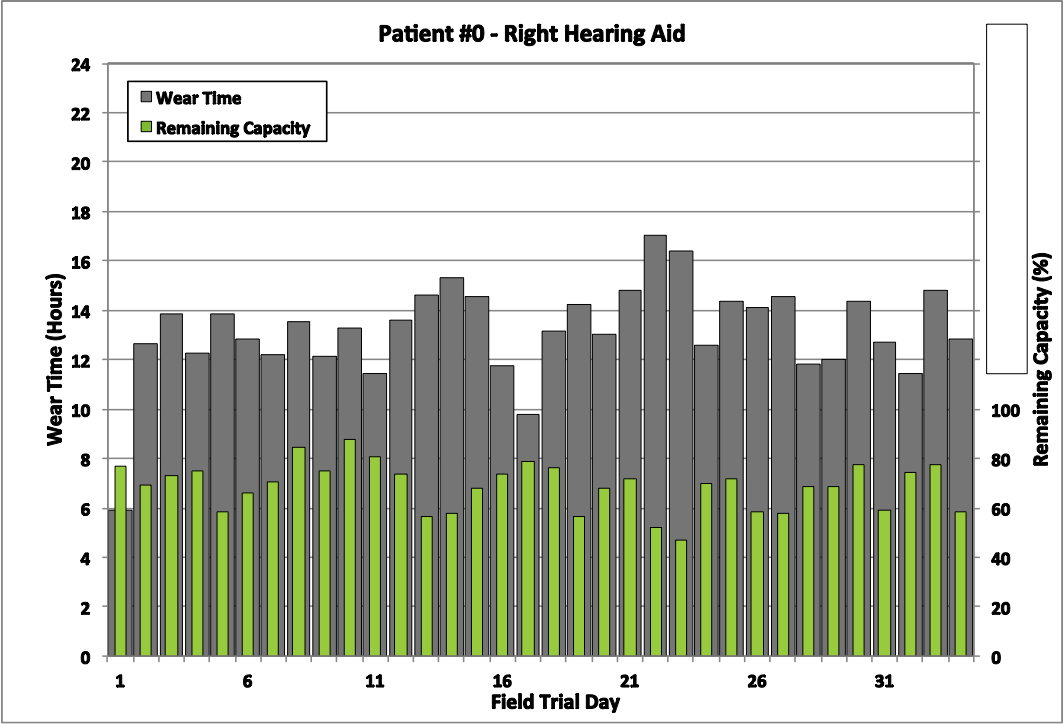
Figure 8. Wear time and remaining capacity.
We then moved forward with Siemens Market Acceptance Test (MAT). There were 16 patients, nine of them returned surveys and we collected data from seven of those patients. This test was conducted from July 2015 through November 2015. DCM is our data collection module. We were able to look at the data and understand exactly what they were doing. On average, during the study period, the participants wore them for over 46 days. Most participants wore them for over 14 hours per day. The majority required an average of 3.5 hours to fully recharge them.
Survey Data
We asked several questions and compiled the following data in our survey:
- Average number of days between zinc air battery changes: 9
Again, these are not MiFi hearing aids, so that's not surprising to hear.
- Average number of hours reported to wear hearing aids: 12
We saw 14 in our data. That discrepancy was very likely a reporting issue.
- Number of times patient heard low-battery warning: 3 days out of 256 tracked days.
Because the hearing aid thinks that our silver zinc battery is a traditional zinc air, the hearing aids continue to operate as designed. Normally a patient will receive a low battery warning a half an hour or so before the hearing aid batteries die. Our batteries will do the exact same thing. However, because our product never gets that low in capacity, unless you're wearing it or forget to charge it, patients rarely hear the low battery warning.
- Number of patients that report aids performed the same as zinc air: 9 out of 9
- Number of patients that would recommend the ZPower System to a friend: 9 out of 9
- Number of patients would recommend their audiologist offer the ZPower System to their patients: 9 out of 9
Patient Satisfaction Survey
Next, using the following scale, patients were asked three additional questions.
5 = completely satisfied
4 = satisfied
3 = neutral
2 = dissatisfied
1 = completely dissatisfied
Overall how satisfied were you with the ZPower rechargeable system?
8 out of 9 patients reported a 5.
1 out of 9 patients reported a 4.5 of 5.
Overall how satisfied were you with the ease of using the system?
8 of 9 reported a 5.
1 out of 9 reported a 4.5.
Overall, how satisfied are you with the lighting system of the charger?
8 out of 9 reported a 5.
1 out of 9 reported a 4.5.
Beltone Market Acceptance Test (MAT) Results
We then did the same thing with Beltone Market Acceptance Testing (MAT). This took place in November 2015 through February 2016. It's important to discuss Beltone because this was the first product that used MiFi. Beltone, ReSound and Starkey all used a different type of streaming, with cellphones and other items pairing directly to the hearing aids. As we know, this has immense battery drain. We initially conducted this with 50 people that used a lower capacity battery, a 28 mAh. We then innovated and brought 15% additional capacity, so we moved 7 participants into the 32 mAh cells. All but one had reported having short days with a 28 mAh system. It's important when we deal with streamers and tech-savvy patients, that we were able to quickly provide them a higher capacity battery. There were seven technical users and six returned their surveys.
If you look at the charger data from these participants, the average number of days in the study was 56. The average number of hours hearing aids were worn per day was 11.6. Because MiFi has a higher discharge rate, instead of taking 3.5 hours, it took 4.5 hours to recharge, which is expected with the type of drain you see from a MiFi system.
Let’s look at data from a light user, non-streamer using a product called Beltone Promise (Figure 9). This is comparable to a ReSound Alero. Figure 9 includes 53 days of data. The green bars represent the remaining capacity and the black is the wear time. This patient did not wear her hearing aids consistently. On some days, she wore them for only one hour. Other days, she wore them for 19 hours. Even though she is an inconsistent user, there is plenty of capacity on a daily basis whether she charges, recharges, has a high day, or a low day.
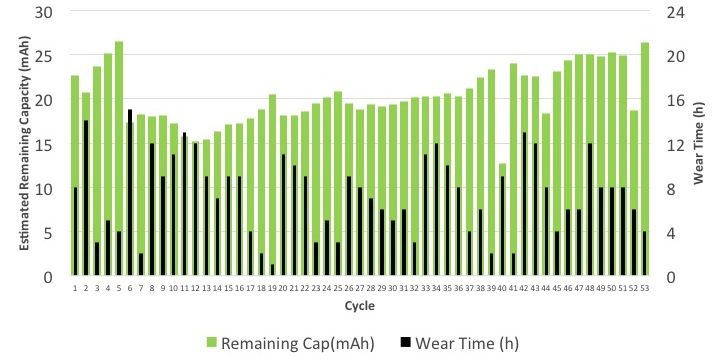
Figure 9. Light user, non-streamer with Beltone Promise hearing aid.
This next graph shows data from a consistent user (Figure 10). He was streaming using a Beltone First (comparable to a ReSound Linx product). Wear time is more consistent, on average around 14 hours a day. He would get up, put the hearing aids in, and take them out when he went to bed. You can see that even though he's wearing them 14 hours and streaming, there was still plenty of remaining capacity at the end of his day.
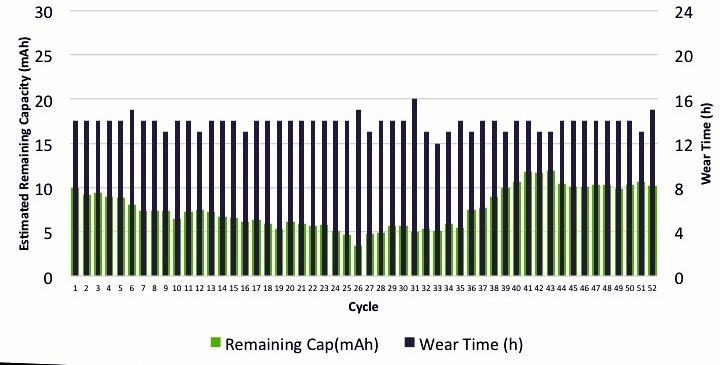
Figure 10. Consistent user / streamer with Beltone First hearing aid.
The third user wore the Beltone Legend hearing aid (comparable to a ReSound Linx2). This participant’s usage pattern exemplifies our toughest type of patient: a very erratic user (Figure 11). He had 73 points of data in a 56-day trial. In other words, he put the hearing aid on and took it off multiple times a day. He is a high streamer (3-4 hours per day) user. We couldn't even capture the remaining capacity because of how erratic his use was. However, he is one of our happiest users, and he provided a gleaming testimonial, which I will share with you shortly.
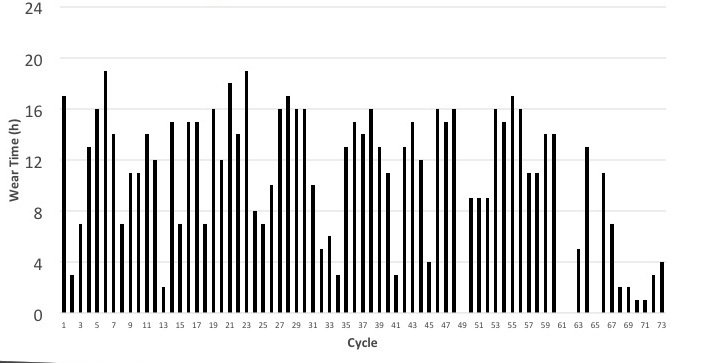
Figure 11. Wear times of erratic user/streamer, using Beltone Legend hearing aid.
The next chart (Figure 12) demonstrates how the ZPower system meets the needs of a light user, an average user, and a heavy user. We needed to make sure that all patients are good candidates and all patients are satisfied. The top blue graph is the activity of a light user. On average, they had 13 hours of remaining capacity every night after only wearing the hearing aids for a few hours a day. The green graph represents the average user. This person consistently wore them for 14 hours a day with streaming, and still had 5.5 hours of capacity left at the end of the night. Remember Mr. Erratic? As evidenced by the gray graph, even though he was all over the place, at the end of the day he still had an average of 2.7 hours remaining. It is evident that ZPower can easily meet the needs of all types of patients.
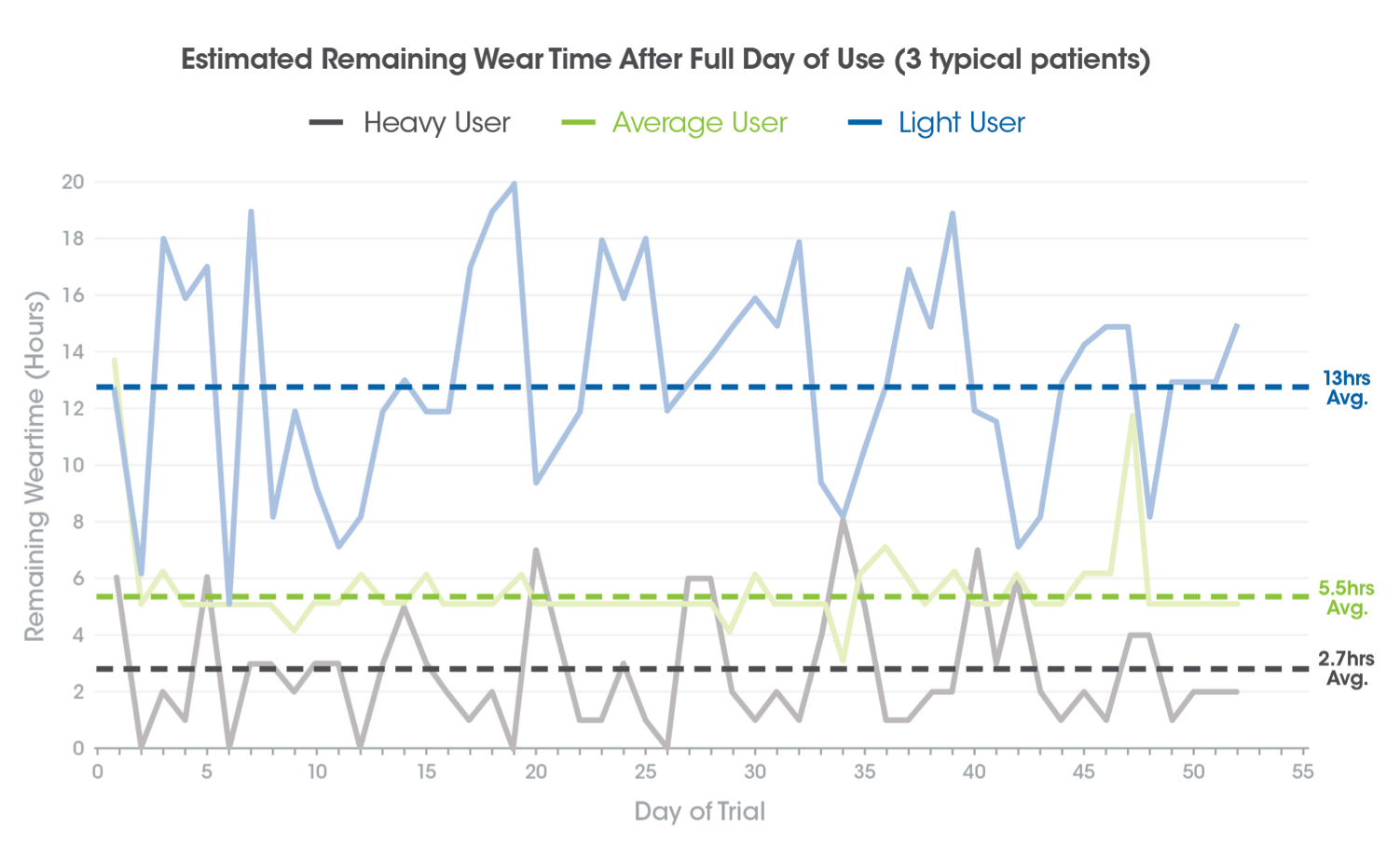
Figure 12. Estimated remaining wear time after full day of use (3 typical patients).
The next graph (Figure 13) shows the activity of a participant who needed to move from the 28 to the 32 mAh cell. The black line shows that with the 28 mAh cell, he was having a hard time getting through a full day. After we upgraded him into a 32 mAh cell, he had no problems getting through a full day, and rarely does he ever plateau. This is the 52-year-old man we mentioned earlier who commented, "My quality of life has improved."
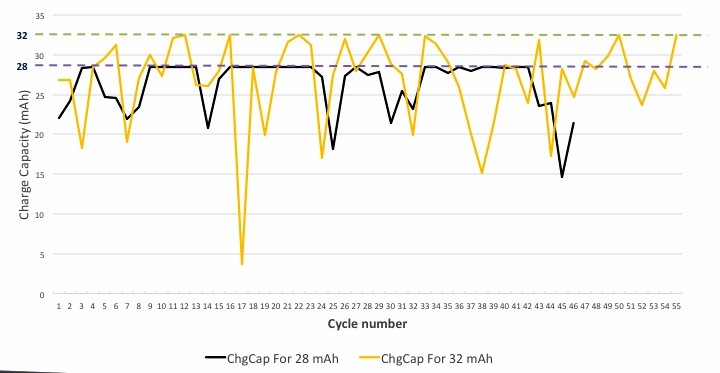
Figure 13. Heavy user charge capacity comparison: 28 mAh vs. 32 mAh.
Patient and Provider Feedback
Survey Data – 32 mAh
We surveyed users to obtain their feedback and these are the results.
- Average number of day between zinc air changes: 4
Since these are MiFi users, this is not surprising.
- Average number of hours reported to wear hearing aids: 3.7
Note that our very low user skewed these results a bit.
- Number of times patient heard low-battery warning: 3 days out of 392 tracked days
That patient was wearing them for 18 hours a day and streaming for four hours; a few times he would hear that low battery warning.
- Number of patients reports that aids with ZPower System performed the same as zinc air: 7 out of 7
- Number of patients that would recommend the ZPower System to a friend: 7 out of 7
- Number of patients would recommend their hearing care professional offer the ZPower System: 7 out of 7
When asked overall how satisfied were you with the ZPower system? 7 out of 7 participants reported the highest level of satisfaction. One participant rated us a 6 on a scale of 1 to 5. Overall, we deemed these results as “hitting it out of the park” with this product.
Patient Comments/Video
I want to share with you a recent ZPower video, available on our website. It is also available for you to use on your website.

Provider Comments
How do these results impact providers? One of the independent hearing care providers in these trials said, "Our patients are very satisfied with ZPower. Some patients ask for rechargeability and others have dexterity issues. We would lose those sales without ZPower."
A Director of Professional and Audiology Services shared with us that, "ZPower allows for an ease of use not available with traditional batteries. Patients no longer have to deal with batteries being difficult to change or dying at the worst time.”
Another ZPower System wearer who is also one of the largest providers in the country, shared this: “When our patients use ZPower, the hearing aid return rate drops by 3 or 4 percentage points from the 12% average seen in the industry."
The ZPower Rechargeable System
Let's watch how easy it is to make a hearing aid rechargeable. In this example, the hearing aid is a Siemens Pure.
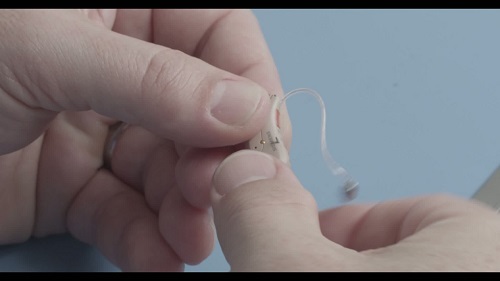
I hear the question: Why make a Siemens hearing aid rechargeable when it already is? I thought the same thing when I first joined ZPower. I quickly learned that although the patients and the providers acknowledge the need for rechargeability, the NiMH solution simply wasn't giving patients a full day, especially if they were wearing a size 312 or needed a high power receiver. ZPower batteries last all day, all year, for all of your patients.
Incorporating ZPower into Your Practice
Now that you know how the conversion works, let's talk about what it means in your practice. Have you been giving away batteries? Why give away batteries when patients will see the value in paying for rechargeability? In one minute and 20 seconds, you can change any hearing aid into being rechargeable. It's quick and easy. The logistics of supporting this program do not impact your practice. However, you can reduce inventory management. Most patients use 120 batteries per year (assuming they change every 6 days). If you have 500 active patients, that's 60,000 batteries that you have to manage, and perhaps are giving away. The bottom line is: What is your actual cost of continuing to use zinc air batteries?
Determining Value
When determining value, we do not recommend a specific price; we want to help you determine if there is a certain value that you could use in order to help set the pricing. In the Rickett’s study I mentioned, patients were willing to pay $340 for new purchase with hearing aids; they were willing to pay $300 to retrofit older hearing aids. This was based on an early prototype that was not very attractive. Depending on your market, you may adjust those prices up or down.
With an $1,800 average selling price for national market, this yields a 10% increase in acquisition price. Very few products today allow you to increase your acquisition price without also impacting your cost of goods.
Consider the long-term value for the practice. If your practice fits 200 or 600 or 1,000 units a year, you have the potential to benefit even if you sell the system on the low end for $300 and replacement batteries at $50. This is a great way to generate new patients, generate additional revenue from retrofitting patients, and is a reduction in the cost to acquire a new patient (which is typically $350).
You can also determine the five-year rate of return. If you only offer this to 40% of your patients, this translates into a five-year profit of approximately $7,000 for practices selling 200 units per year up to $36,000 for practices selling 1,000 units per year. If you're like most practices, and you decide that this is something you want to offer to all of your patients, those numbers will significantly increase.
We recommend that you talk to one of our account executives about price setting if you have any questions.
Hearing Aid Compatibility and Regulatory Standards
In order for our company to be a part of the hearing healthcare industry, we performed extensive testing with third-party repair labs. These tests have been shared with all hearing aid manufacturers in order to show our product does not cause harm to hearing aids and, more importantly, to patients. We have been engaged with the leading six hearing aid manufacturers since 2008 and continue to provide additional information.
When we do acoustic testing, we are producing an OEM equivalent. That means, in terms of hearing aid signal processing, what is coming out of that hearing aid receiver is exactly the same with a silver zinc as with a zinc air battery. We did substantial safety testing, wireless streaming, and IP testing. We did this for the battery cell, the battery door, and the charger.
Candidacy
Again, candidates include people who are: vision impaired, dexterity impaired, budget conscience, tech savvy, and those who are baby boomers. People who use high power receivers or who often use streamers/streaming are also great candidates. To identify a patient for the ZPower system, ask the question: Do you want to change your batteries once a year or twice a week? It truly is a product that you can offer to every single patient. You can use this as a gateway for new patient acquisition. You can use this as a way to retain patients, because they cannot buy this system at CVS, Amazon, or Costco. This is also a way to obtain new clients via word-of-mouth: cheap, quick, credible, and affordable marketing.
Product Availability
Current availability includes: The Siemens Pure, which is compatible with the Micon, Binax and Primax in size 312 for all levels (7,5,3), and the Orion, which is currently not rechargeable through Siemens; The Audeo V-Series 312, all levels (90, 70, 50 and 30); The Rexton Emerald; The GN ReSound Verso (certain products); The GN ReSound Alera (certain products); Beltone Legend, First and Promise (all levels: 17, 9 and 6). In fall 2016, we will have the addition of a size 13 in certain products. Additionally, soon we're going to have the Audeo V-Series 312T, again all levels (90, 70, 50 and 30). Finally, we are excited to announce that the ReSound Linx and Linx2 312 will be coming later this summer. Our website has a complete and updated list of compatibility, and that list grows often and quickly, so please check back regularly.
Ordering
When you receive the ZPower tracking kit, it will contain a double sticker with the kit number (one for the patient to keep on their kit, and one to add to the patient’s chart). You will remove the clamshells at the top and bottom of the box, which contain one battery door modular (BDM) and one battery assembly module (BAM) per clamshell. You put the battery door on, and then the patient will take home the box with the instruction manual and charger. The charger is already assembled and they will able to plug it in when they get home. Please encourage your patients to read the instruction manual prior to using their ZPower Rechargeable System.
Warranty
I want to make sure everyone understands that no manufacturer endorses or supports ZPower. That's very important. We are viewed as a competitor. All manufacturers have the same standard warranty verbiage: “Should any damage occur from a third-party, the warranty shall be voided.” That language has existed for decades. That is language that we also acknowledge and have in our warranty. What that means is if we do something to the hearing aid, we are 100% responsible for it.
Signia will honor their standard warranty; any third-party damage not covered will be paid by ZPower directly to Signia. GN Resound will honor their standard warranty; any third-party damage not covered will be paid by ZPower directly to GN ReSound. During the AAA conference, we met with Hans Mehl, the Global Vice President of Operations for Phonak. He specifically told us that they would also honor their standard warranty and any third-party damage not covered will be paid by ZPower directly to Phonak. Signia, ReSound, Beltone and Phonak have all acknowledged this, and if you've been told otherwise it's important to get that in writing as there is some miscommunication out there.
Next Steps
To become a ZPower Distributor, fill out the New Customer Packet and return it to your Account Manager or to ZPower Customer Care.
Support
We will send you a launch kit that includes: a poster, a B2B brochure, B2C brochures (20), a lobby display (a stand up card for a desktop), a dummy charger and two dummy hearing aids. The patient can pick them up, hold them in their hands, and understand how they operate, to see that they are capable of using a rechargeable system.
Integrated Marketing Campaigns
We have four different messages:
- Don’t need the hassle
- Power your life
- Power to the People and the Planet
- Say Goodbye
Each of these campaigns has full marketing support including a full-page newspaper ad, a database letter, a direct mail piece, a web banner, and a PR letter. We are here to support you in promoting rechargeability.
How do you start offering your patients rechargeability? Again, it really is as simple as asking one question: Do you want to change your battery twice a week or once a year?
Attached is a list with key contact information:
Sara Sable-Antry, VP of Sales & Marketing: 740-632-8178 / sara.sable-antry@zpowerbattery.com
Michelle Abbott, Account Manager – East Coast: 518-331-4182 / michelle.abbott@zpowerbattery.com
Kevin Ratay, Account Manager – Midwest: 312-722-8161 / kevin.ratay@zpowerbattery.com
Ryan Munoz, Account Manager – West Coast: 856-313-5720 / ryan.munoz@zpowerbattery.com
Additionally, we have a marketing and customer care team ready to support you as you move forward into rechargeability.
Please feel free to reach out to me directly with any questions. Thank you again for your time and we look forward to working with you.
Citation
Sable-Antry, S. (2016, September). ZPower: Meeting the needs of patients and providers. AudiologyOnline, Article 18020. Retrieved from https://www.audiologyonline.com


